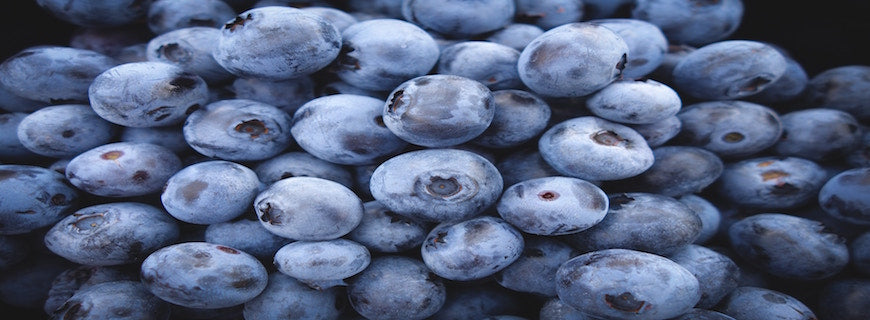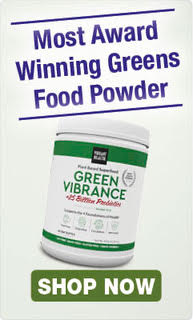Even your favourite celebrity can seem a bit annoying when over-advertised. The same goes with food. When so-called “superfoods” and other pricey edibles are constantly being glorified, it’s hard to believe the hype that surrounds them.
Sometimes though, even foods that seem 'too good to be true' deserve a second look. Notwithstanding the constant PR and marketing overtures from the healthcare industry, some foods really are superior (even those listed under ‘superfoods’), and warrant the extra cost for their appreciable benefits.
When is it OK to Believe the Hype?
Not all foods are nutritionally equal. No-one will argue that a biscuit or slice of cake is a healthier snack than an apple and almond butter. But health companies aren’t just comparing fruits and vegetables to junk food any more; they are comparing them to each other.
The problem with claiming some fruits and vegetables are superior to others is that it makes us feel bad about the ones we do eat!
And given only one in five Brits get their recommended 5 servings of fruits and vegetables per day, now’s no time to get picky.
According to a 2014 National Diet and Nutrition Survey, the UK population is still eating too much of the dangerous type of saturated fat, as well as too much added sugar and salt.
Moreover, they are not enough vegetables, oily fish, fruit and fibre. The study highlighted some disturbing trends in our eating habits:
- Added sugars account for approximately 15% of total calories for children aged 4-18.
- Saturated fat account for approximately 12.6% of total calories by adults aged 19-64.
- Salt intake is approximately 7.2 grams per day over the recommended limit for adults aged 65+.
To get the UK population to its recommended daily intake of 5 servings of fruits and vegetables per day, it might be time to rethink those grudges we hold against superfoods and other foods that seem overly gimmicky.
Granted, there is no cure-all food out there that will solve the world’s health problems, but the key is to adopt a lifestyle that encourages you to eat as many different plant-based foods as possible, even if they aren’t necessarily classed as superfoods.
And even if they are, why not give them a go to see if they are right for you and your health?
Switching to an Alkalising Diet Pairs You with All the Right Foods
To be sure, the overselling of superfoods has left us more confused than ever. We could be forgiven for thinking we are doing something wrong if an item ends up in our shopping trolley that isn’t labelled as such.
The simple solution is to adopt an alkalising diet – or a diet that consists mainly of foods that won’t create acidosis or an imbalance in the body.
The alkaline diet helps restore pH balance to our blood. When the food we eat causes acidic conditions in the body, disease becomes more likely.
Acidity or acidosis is characterised by chronic inflammation and persistent symptoms such as:
- Frequent colds
- Migraines or headaches
- Digestive upsets
- Skin problems
- Bad breath
- Insomnia or fatigue
- Blood sugar instabilities
But when we eat alkaline foods that promote a balanced pH, we do not see these problems.
According to nutritionist Hayley McAlinden, “The reason I discovered the importance of an alkaline diet was because I had tons of acidity-related health problems ranging from chronic cystitis, thrust, acne and chronic fatigue. Needless to say, once I addressed my pH these symptoms disappeared!”
For tips on adopting an alkaline diet, McAlinden recommends starting by limiting wheat, sugar and trans fats and upping your intake of fresh steamed vegetables, salads, green smoothies and juices.
She also advises hydrating with filtered water and herbal teas and recommends limiting meat intake to just a few times per week.
A Green Smoothie to Kick-Start Your Alkaline Diet
You can’t go wrong with a basic green smoothie to kick-start your alkaline diet. Green smoothies can be enjoyed first thing in the morning for breakfast, or as a delicious afternoon snack. You can even throw some raw cacao powder in for a delicious dessert.
Following an alkaline diet doesn’t mean giving up the foods you love, nor does it mean only eating superfoods. It should be centred on food in its purest form, so that you get the most nutrition it has to offer.
You might be interested to read our article Top 10 Green Smoothie Health Benefits.
Conclusion
There are endless green smoothie recipes on the internet, but here’s our favourite. Try it out for yourself: we’re sure you’ll love it.
Ingredients:
- One cup almond or coconut milk
- One frozen banana
- One scoop Green Vibrance Powder
- One cup frozen berries or pineapple chunks
To make, add all ingredients to a high-speed blender and…well…blend!
Remember, you can also use supplements to help keep your alkaline diet going strong. Check out our article about which supplements can help your body stay alkaline.
Want to learn more about superfoods and discover must-try recipes that use them? 23 Superfoods to Add to Your Diet is a great place to start.




























Leave a comment